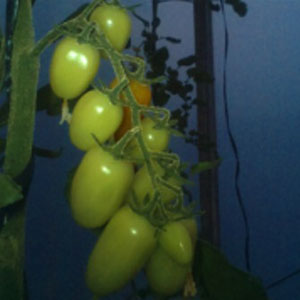Monitoring mini-tomatoes growth: A non-destructive machine vision-based alternative

Published: 9 September 2022
Abstract Views: 1240
PDF: 633
HTML: 47
HTML: 47
Publisher's note
All claims expressed in this article are solely those of the authors and do not necessarily represent those of their affiliated organizations, or those of the publisher, the editors and the reviewers. Any product that may be evaluated in this article or claim that may be made by its manufacturer is not guaranteed or endorsed by the publisher.
All claims expressed in this article are solely those of the authors and do not necessarily represent those of their affiliated organizations, or those of the publisher, the editors and the reviewers. Any product that may be evaluated in this article or claim that may be made by its manufacturer is not guaranteed or endorsed by the publisher.
Similar Articles
- Xiwang Du, Xia Li, Fangtao Duan, Jiawei Hua, Mengchao Hu, Static laser weeding system based on improved YOLOv8 and image fusion , Journal of Agricultural Engineering: Vol. 55 No. 4 (2024)
- Alessandro D'Emilio, Simona M.C. Porto, Giovanni Cascone, Marco Bella, Marco Gulino, Mitigating heat stress of dairy cows bred in a free-stall barn by sprinkler systems coupled with forced ventilation , Journal of Agricultural Engineering: Vol. 48 No. 4 (2017)
- Kamalesh Kanna S, Kumaraperumal Ramalingam, Pazhanivelan P, Jagadeeswaran R, Prabu P.C., YOLO deep learning algorithm for object detection in agriculture: a review , Journal of Agricultural Engineering: Vol. 55 No. 4 (2024)
- Bing Li, Jiyun Li, Key technology of crop precision sowing based on the vision principle , Journal of Agricultural Engineering: Vol. 54 No. 1 (2023)
- Yusuf Uzun, Mehmet Resit Tolun, Halil Tanyer Eyyuboglu, Filiz Sarı, An intelligent system for detecting Mediterranean fruit fly [Medfly; Ceratitis capitata (Wiedemann)] , Journal of Agricultural Engineering: Vol. 53 No. 3 (2022)
- Alina Evelyn Badillo-Márquez, Jonathan J. Cid-Galiot, Rubén Posada-Gómez, Alberto Alfonso Aguilar-Lasserre, Automated system for the detection of risk in agricultural sugarcane harvesting using digital image processing and deep learning , Journal of Agricultural Engineering: Vol. 55 No. 3 (2024)
- Marzia Quattrone, Giovanna Tomaselli, Lara Riguccio, Patrizia Russo, Assessment of the territorial suitability for the creation of the greenways networks: Methodological application in the Sicilian landscape context , Journal of Agricultural Engineering: Vol. 48 No. 4 (2017)
- Gabriella Impallomeni, Francesco Barreca, Agrivoltaic systems towards the European green deal and agricultural policies: a review , Journal of Agricultural Engineering: Vol. 56 No. 1 (2025)
- Dhanashree Barbole, Parul M. Jadhav, Comparative analysis of 2D and 3D vineyard yield prediction system using artificial intelligence , Journal of Agricultural Engineering: Vol. 55 No. 1 (2024)
- Kai Tian, Jiefeng Zeng, Tianci Song, Zhuliu Li, Asenso Evans, Jiuhao Li, Tomato leaf diseases recognition based on deep convolutional neural networks , Journal of Agricultural Engineering: Vol. 54 No. 1 (2023)
You may also start an advanced similarity search for this article.

 https://doi.org/10.4081/jae.2022.1366
https://doi.org/10.4081/jae.2022.1366 











